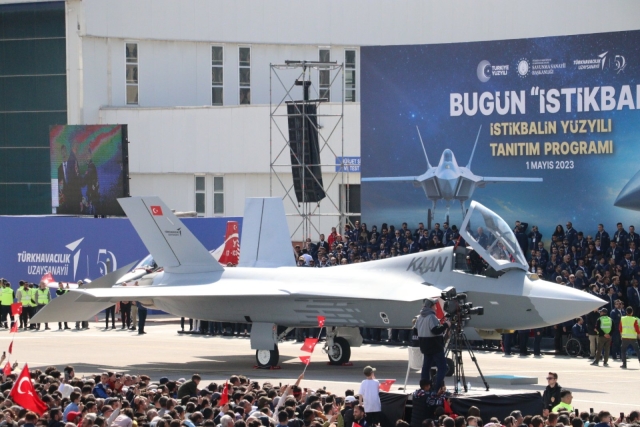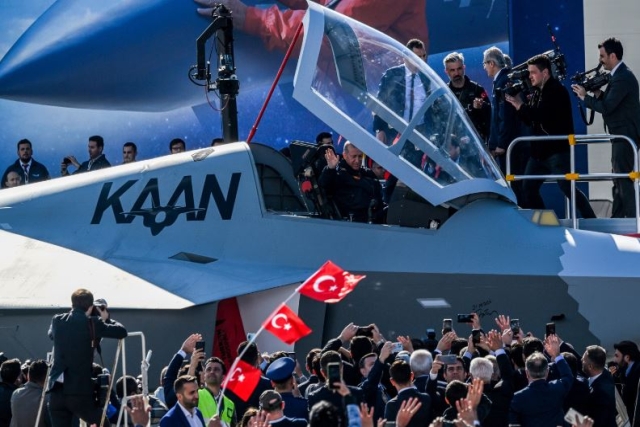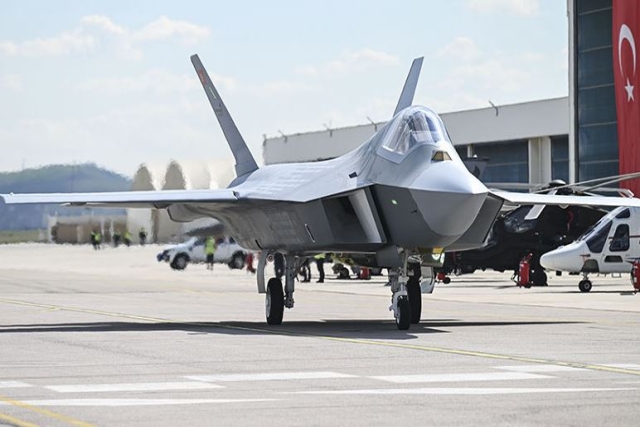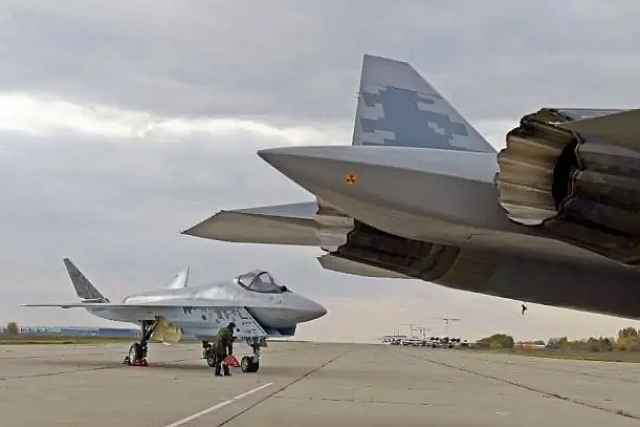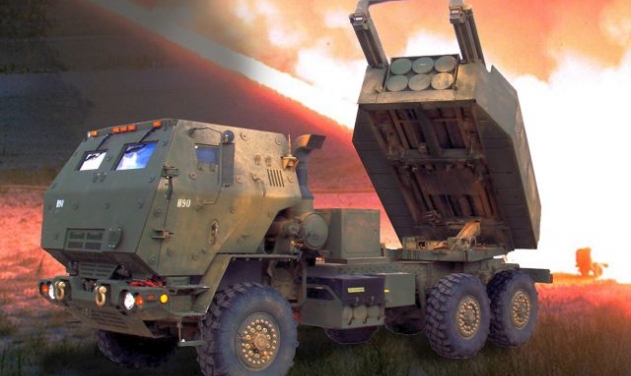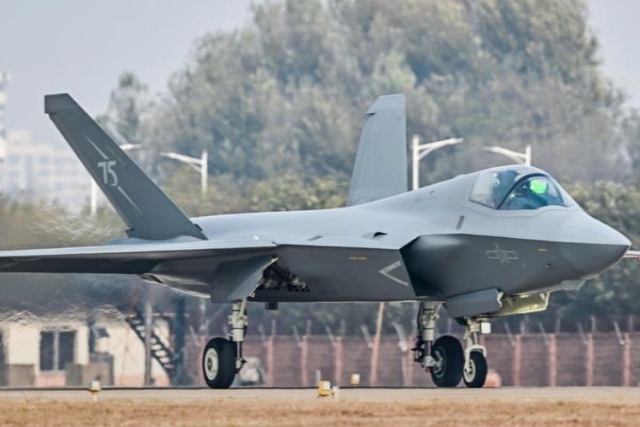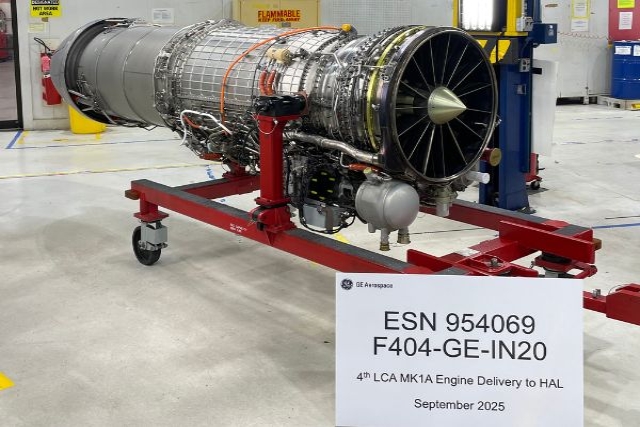First Flight of Turkey's KAAN Fighter Jet Postponed Indefinitely
KAAN's maiden flight was scheduled to take place today, 27 December, 2023.
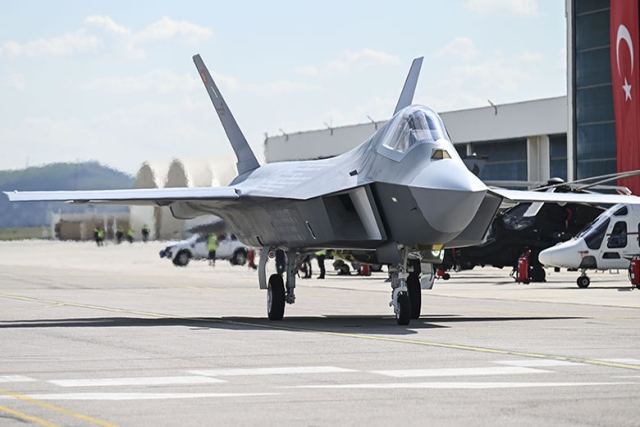
The National Combat Aircraft (MMU) KAAN, Turkey's flagship defense project led by Turkish Aerospace Industries (TAI), has experienced a delay in its highly anticipated first flight, originally scheduled for 27 December.
Confirmation of the postponement follows a series of ground tests and taxi tests, with the maiden flight now expected to occur in the near future.
The MMU KAAN project, initiated in 2016 and considered the largest endeavor by TAI, has undergone rigorous testing phases. These include ejection seat tests, full-length static tests, control surfaces inertia and static tests, landing gear drop tests, avionics system tests in the system integration laboratory, and engine starting tests following fuel tests.
According to the obtained information, the first flight is anticipated to take place in the coming weeks, contingent upon the successful completion of ground and taxi tests. These extensive testing procedures are crucial for ensuring the safety and performance of the national warplane.
The detailed program calendar of MMU KAAN reveals that the project's initial conditions, known as T0, were met in 2018. Phase-1, covering preliminary design activities, occurred between 2018-2022. The ongoing Phase-2, from 2022-2029, involves detailed design and qualification activities, with the aim to produce three prototypes by 2026. The assembly of the second and third prototypes is currently underway at TAI facilities.
The Block-10 configuration, destined for the Air Forces Command, is targeted for development by 2029. The Turkish Air Force had initially announced the delivery of ten KAAN Block-1 warplanes from Phase-2 between 2030-2033, but TAI revised this date to 2028.
In Phase-3, slated for 2034-2040, development and mass production activities for other KAAN blocks will be carried out, as per the revised schedule by TAI in 2030.
Recent developments from Turkish Aerospace Industries indicate the country's commitment to advancing its defense capabilities, with preparations underway for the debut flights of its unmanned combat aircraft ANKA-3 alongside the KAAN.
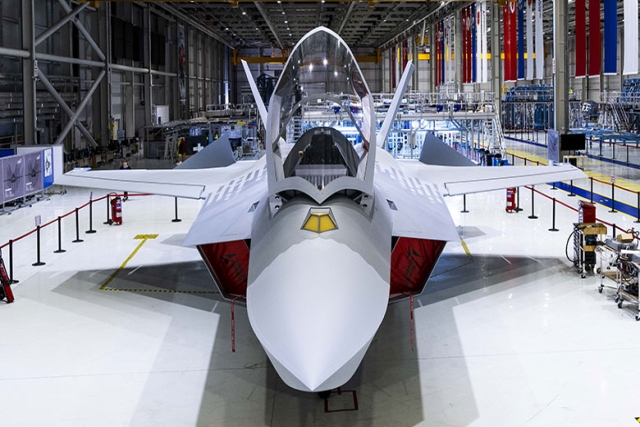
Earlier this month, TAI announced the commencement of assembly activities for the second and third prototypes of the National Combat Aircraft KAAN, marking significant progress in the ambitious defense project. The assembly of the second KAAN prototype is expected to be completed in the first half of 2024, and the integration of airworthy landing gear and the flight control computer into the first KAAN prototype has already been accomplished, with the aircraft leaving the hangar for the first time in May 2023.
Designed to replace the existing F-16 aircraft in the Air Forces Command inventory, the KAAN, formerly known as TF-X, is a formidable force with a length of 21 meters, boasting a maximum speed of 1.8 Mach. This is facilitated by its twin engines generating 13,000kg thrust each. The aircraft is strategically designed to engage both air-to-air and air-to-ground targets, featuring a wholly domestic infrastructure for secure data sharing and the use of smart munitions.
Equipped with high-performance radar, electronic warfare capabilities, electro-optics, communication, navigation, and identification systems, the KAAN promises increased combat power with precise and accurate firing from internal weapon slots at high/supersonic speeds. Additional features include automatic target recognition and detection, multiple data fusion, and artificial intelligence capabilities.

